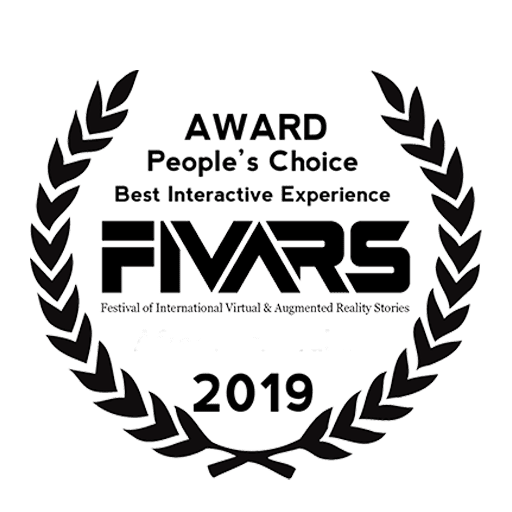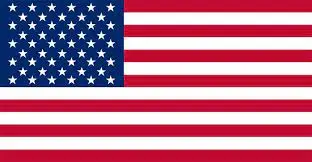Have you ever wanted to try on those stylish glasses before making a purchase or see how a new hair color would look without any commitment? With augmented reality, you can do this effortlessly from your mobile device.
Augmented reality has become a powerful marketing tool embraced by leading brands worldwide. In fact, the AR market is expected to experience significant growth, with projections from Fortune Business Insights estimating it will reach $97.76 billion by 2028. This rapid expansion highlights how AR is shaping the future of customer engagement and brand interaction.
Whether it’s virtually applying cosmetics, visualizing furniture in your own home, or playing games on your dining table, AR combines digital elements with the real world, creating memorable moments.
You will also gain insights into how to effectively use AR to boost your brand experience, improve storytelling, and strengthen customer relationships.
From interactive product experiences to memorable campaigns, AR has become an essential tool for building consumer relationships. In this article, we’ll explore 15 examples of augmented reality brand experiences and discuss how AR enhances marketing performance.
What Is Augmented Reality?
Augmented reality is a technology that layers digital elements like images, videos, or text onto the physical world in real-time. By using devices like smartphones or AR glasses, AR enhances users’ perceptions of their surroundings in real time. This blend of physical and virtual experiences has transformed how brands interact with their audiences, offering personalized and engaging touchpoints that capture attention and drive engagement.
15 Notable Augmented Reality Marketing Examples
1. Coca-Cola Zero Sugar’s #TakeATasteNow Campaign
In fall 2023, Coca-Cola launched the #TakeATasteNow campaign, a major digital out-of-home (DOOH) and augmented reality (AR) initiative in partnership with Tesco Group. This campaign was launched in 13 major locations across the UK, including cities like London, Glasgow, Manchester, Cardiff, and Bristol, as well as at the Lakeside and Bluewater Shopping Centres. It ran from September 25th to October 15th.
In a groundbreaking approach for a DOOH (digital out-of-home) campaign, smartphone users had the opportunity to interact with and modify the AR visuals displayed on the screens. By scanning a QR code, participants received a digital version of a Coke Zero bottle on their phones, along with a voucher to claim an actual drink at a nearby Tesco store.
2. Pokémon GO by Niantic
No discussion of real-world Augmented Reality applications is complete without mentioning Pokémon GO. This iconic mobile game encourages players to explore the outdoors in search of Pokémon, allowing them to fulfill childhood dreams. The game’s ability to blend digital entertainment with physical activity showcases the significant role gamers play in the AR world.
Next time you step outside to catch a shiny Pikachu, think about the numerous ways AR can enhance real-world interactions!
Enhance your brand with Euphoria XR, a leading AR development company specializing in creating immersive augmented reality experiences. Whether it’s product visualization, virtual try-ons, or interactive marketing, we bring your concepts to life with AR solutions. Take your customer engagement to new heights—partner with us today!
3. Burberry: Augmented Reality Meets In-Store Experience
Burberry has long been a pioneer in merging fashion with technology, and their recent AR initiative exemplifies this commitment. To celebrate the launch of their new Olympia bag, Burberry devised a captivating in-store augmented reality experience at the iconic Harrods department store in London.
Upon entering the store, customers were invited to interact with AR-enabled statues that came to life. These statues not only showcased the elegance and craftsmanship of the Olympia bag but also engaged shoppers in an immersive manner. Customers could witness the statues moving gracefully around the store, showcasing various poses and interactions, enhancing the allure of the bag.
4. DHL Shipping’s AR Glasses
DHL is at the forefront of innovation with its use of AR glasses, enhancing warehouse operations by overlaying essential information in real-time. These smart glasses streamline product picking and inventory management, allowing employees to fulfill customer requests with increased accuracy and efficiency.
Who wouldn’t appreciate technology designed to simplify daily tasks? This remarkable application of Augmented Reality not only boosts workplace productivity but also accelerates shipping processes, potentially benefiting a variety of other industries.
5. Pepsi Max: A Surreal Encounter in London
Pepsi Max is renowned for its bold and inventive marketing strategies, and their AR campaign at a London bus shelter certainly did not disappoint. The AR experience featured spectacular elements such as a colossal robot firing lasers down the street and monstrous tentacles rising from the pavement, appearing to capture people in their grasp.
By combining humor and spectacle, Pepsi Max successfully engaged its audience, creating a memorable encounter that encouraged social sharing and heightened brand awareness. This innovative use of augmented reality highlighted Pepsi’s ability to connect with consumers in unexpected ways, reinforcing its position as a leader in experiential marketing.
6. Acura: Transforming Test Drives into Augmented Reality Adventures
In a bid to redefine consumer perceptions and boost brand engagement, Acura developed an innovative AR racing game that allows users to virtually experience their car models. This exciting application enables smartphone users to participate in thrilling racing scenarios featuring various Acura models.
The game gamifies the traditional test drive by allowing players to race against competitors, giving them the opportunity to feel the performance of Acura vehicles in a fun and interactive way. Acura’s use of AR served two primary purposes: first, it provided an engaging alternative for consumers during times when physical dealerships were inaccessible due to lockdowns, and second, it aimed to shift the narrative that Acura cars are merely “soccer mom vehicles.”
7. Adidas: Revolutionizing Shoe Shopping with Augmented Reality
Adidas has always been at the front of integrating technology into retail, and their iOS app takes this innovation to new heights. The app allows users to visualize how a pair of shoes would look on their feet—not just while standing still but also in motion. This feature became increasingly significant during the pandemic when in-store shopping was limited, and consumers were seeking ways to make informed purchasing decisions.
Using augmented reality, customers can project virtual shoes onto their feet, enabling them to assess fit, style, and design before making a purchase. The app enhances the shopping experience by providing a realistic preview that alleviates the uncertainty often associated with online shoe shopping.
8. Microsoft HoloLens
While many associate Augmented Reality with smartphones, Microsoft has elevated the experience with the HoloLens headset. This groundbreaking AR device opens up a world of possibilities across education, healthcare, and more. The versatility of the HoloLens makes it applicable in diverse settings, showcasing AR’s potential to transform various industries—from 3D modeling to tourism.
Although the latest HoloLens headset is required to access its full range of features, most users find the investment worthwhile, as they witness AR reshaping how we interact with technology and our environment.
9. Google Glass and Project Iris
Many have experienced the innovative realm of Augmented Reality through Google Glass, and the excitement for the upcoming Project Iris headset is mounting. While Google Glass was groundbreaking, it faced some criticism regarding design and usability, despite its impressive AR capabilities.
The good news for those seeking a more refined AR experience is that Project Iris promises a sleeker design and improved interaction between the digital and physical worlds, making it a highly anticipated addition to the AR world.
10. IKEA Place Furniture App
When it comes to home furnishing, making the right decision is crucial. The IKEA Place app uses augmented reality to let users visualize how furniture will look in their homes, helping them make informed purchase decisions. The app has evolved, now allowing users to digitally remove existing furniture to see how new items would fit into their living spaces perfectly.
Additionally, the app empowers users to experiment with different layouts, providing a comprehensive tool for reimagining their interiors.
11. RELAYCARS Virtual Car Experience
Purchasing a vehicle is a major decision, and the RELAYCARS Virtual Car Experience is changing how potential buyers explore their options. Through Augmented Reality, users can examine various cars in detail, overcoming the limitations of conventional showrooms.
Forget the hassle of maneuvering through tight spaces; now you can interact with realistic models of vehicles using your smartphone, tablet, or computer. This innovative method empowers buyers to make informed choices when considering new cars.
12. L’Oréal ModiFace
Imagine trying out makeup virtually before committing to a purchase. L’Oréal’s ModiFace app makes this possible, letting users experiment with an extensive range of virtual makeup looks and hair colors. Whether for casual browsing or preparing for an important event, this AR application helps users find the most flattering options.
Feeling adventurous? Why not try a dramatically exaggerated look? Understanding what doesn’t suit you can be just as valuable as discovering what works, whether it’s makeup or hairstyles.
Check out this article on AR app development to explore how augmented reality is revolutionizing industries. Learn about the latest trends, tools, and innovations shaping immersive user experiences!
13. Sephora Virtual Artist Makeup App
With Sephora’s Virtual Artist app, you can try on makeup products virtually before purchasing. Unsure about which foundation shade or lipstick will flatter you? This AR application allows you to experiment with a wide variety of products and complete looks!
Whether customers use the app for serious shopping or lighthearted experimentation, it enhances engagement. Imagine applying this concept to other product categories, from accessories to clothing!
14. Snapchat AR Brand Marketing
One of the most recognizable Augmented Reality applications today is Snapchat, primarily serving as a platform for entertainment. With its playful filters that overlay whimsical animations on users’ faces, Snapchat facilitates fun self-expression. Users can also project customizable 3D characters into their surroundings, adding an interactive element to their photos.
While some may not initially see Snapchat as a prime example of Augmented Reality, it embodies the technology—responding to facial movements, layering engaging graphics, and even providing games for friends to enjoy together.
15. Vogue’s Machine-A Shopping Boutique
Virtual shopping experiences that let users visualize clothing before making a purchase may represent the future of retail. Vogue’s Machine-A app made its debut during London Fashion Week, allowing fashion enthusiasts to try on luxury brand collections through Augmented Reality.
By scanning a QR code, users are transported to a virtual sales floor showcasing seasonal collections, complete with detailed product descriptions and options to purchase items through affiliate links.
How AR Enhances Marketing Performance
Augmented reality is revolutionizing brand engagement by providing unique and interactive experiences. Here’s how AR enhances marketing performance:
Increased Engagement: AR captivates users, encouraging prolonged interaction with the brand compared to traditional marketing strategies.
Enhanced Customer Experience: AR bridges the gap between physical and digital interactions, allowing customers to engage with products in a meaningful way that influences their purchasing decisions.
Personalization: Brands can use AR to create tailored experiences, such as virtual try-ons and customized recommendations, which foster a deeper connection with customers.
Higher Conversion Rates: Engaging AR campaigns lead to increased sales, as customers feel more confident in their choices after interacting with products virtually.
Social Sharing: Unique AR experiences are often shared on social media, enhancing brand visibility and reach as users showcase their interactions online.
Final Note!
Augmented reality is rapidly becoming a transformative tool in brand marketing, with innovative applications across diverse industries. The examples highlighted here illustrate how AR can elevate customer experiences and increase engagement and sales.
By integrating AR into their marketing strategies, brands are not merely selling products but creating unforgettable experiences that resonate with consumers. As the AR adoption grows, brands will continue to find creative ways to connect with audiences and drive meaningful interactions.






















